Email best practices
How many marketing emails is too many?
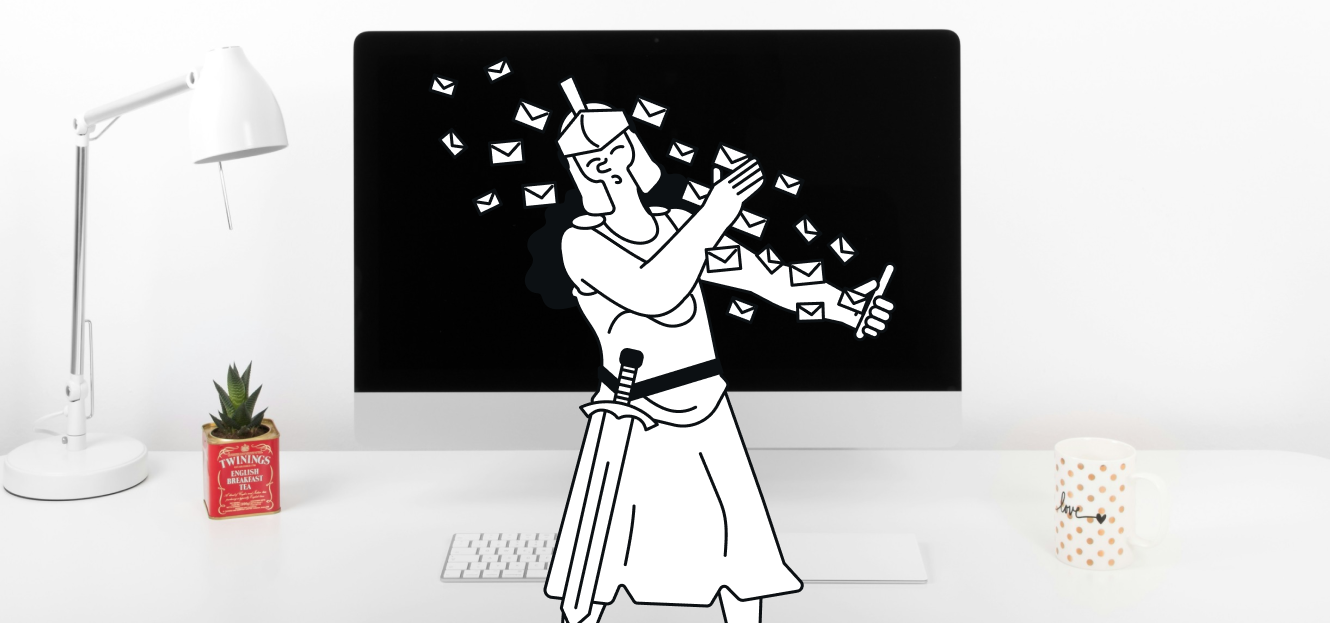
Email best practices

Try and put yourself in your subscribers’ shoes. They check their inbox and it’s overflowing (again). Promotional emails, newsletters, updates… the list goes on. How many times do you think they’ve considered hitting that unsubscribe button in frustration? A new report from Sinch, The art and heart of meaningful customer connections, found that over 26% of consumers would end their relationships with brands due to too much promotional communication.
Email marketing remains a powerful tool, but bombarding your audience can quickly backfire. So, the question remains – how many marketing emails is too many? How do you find the sweet spot between staying relevant and becoming a nuisance? Let’s explore factors affecting ideal email frequency and strategies to discover what works for your audience.
Consumers now have a whole host of digital channels at their disposal through which to communicate with brands; SMS, website forms, Chatbots, live chat, social media, WhatsApp, etc.
Yet despite the arrival of these younger, sleeker, sexier options to the scene, we’ve yet to see anything challenge for the throne of promotional messaging. Celebrating its 53rd birthday this year, email still remains the preferred communication channel for customers, proving age is just a number.
In fact, data from a new Sinch Mailjet report, The path to email engagement 2024, shows that email has increased in popularity with 75% of consumers confirming it’s their preferred channel to hear from brands compared to 42% in 2021. A 33% increase in just 2 years.

Despite the rise in new technology email remains the preferred communication channel for the majority of consumers.
However, this does not give you free license to flood your subscribers’ inboxes with marketing campaigns. Yes, it remains an effective channel, but it is possible to have too much of a good thing.
Send too many emails and your audience will suffer from subscriber fatigue. They’ll begin to feel overwhelmed and annoyed at the clutter they find in their inbox, likely leading to unsubscribes or worse, marking you as spam. This damages your sender reputation and makes it even harder to reach inboxes in the future.
When we asked consumers which situations would discourage them from purchasing from a brand, over 26% said receiving communications too frequently would be a dealbreaker.
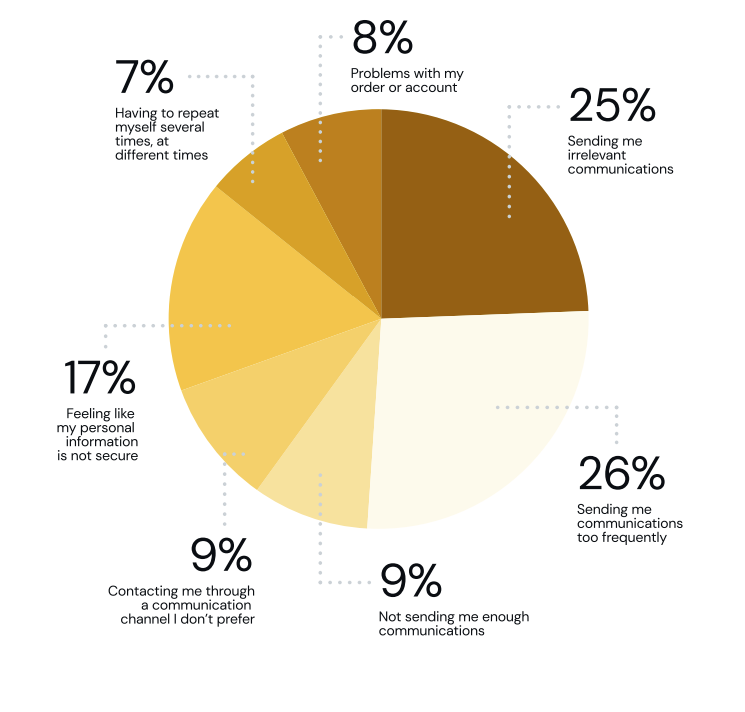
Data from the Sinch’s The art and heart of meaningful customer connections shows the primary dealbreakers when deciding whether or not to do business with a brand.
We must point out that the retail consumers surveyed in this study were asked about customer communications from all channels – not email in isolation. However, supporting data from The path to email engagement 2024 (which does focus on email) found that receiving too many messages from brands was the primary reason people unsubscribed from email lists.
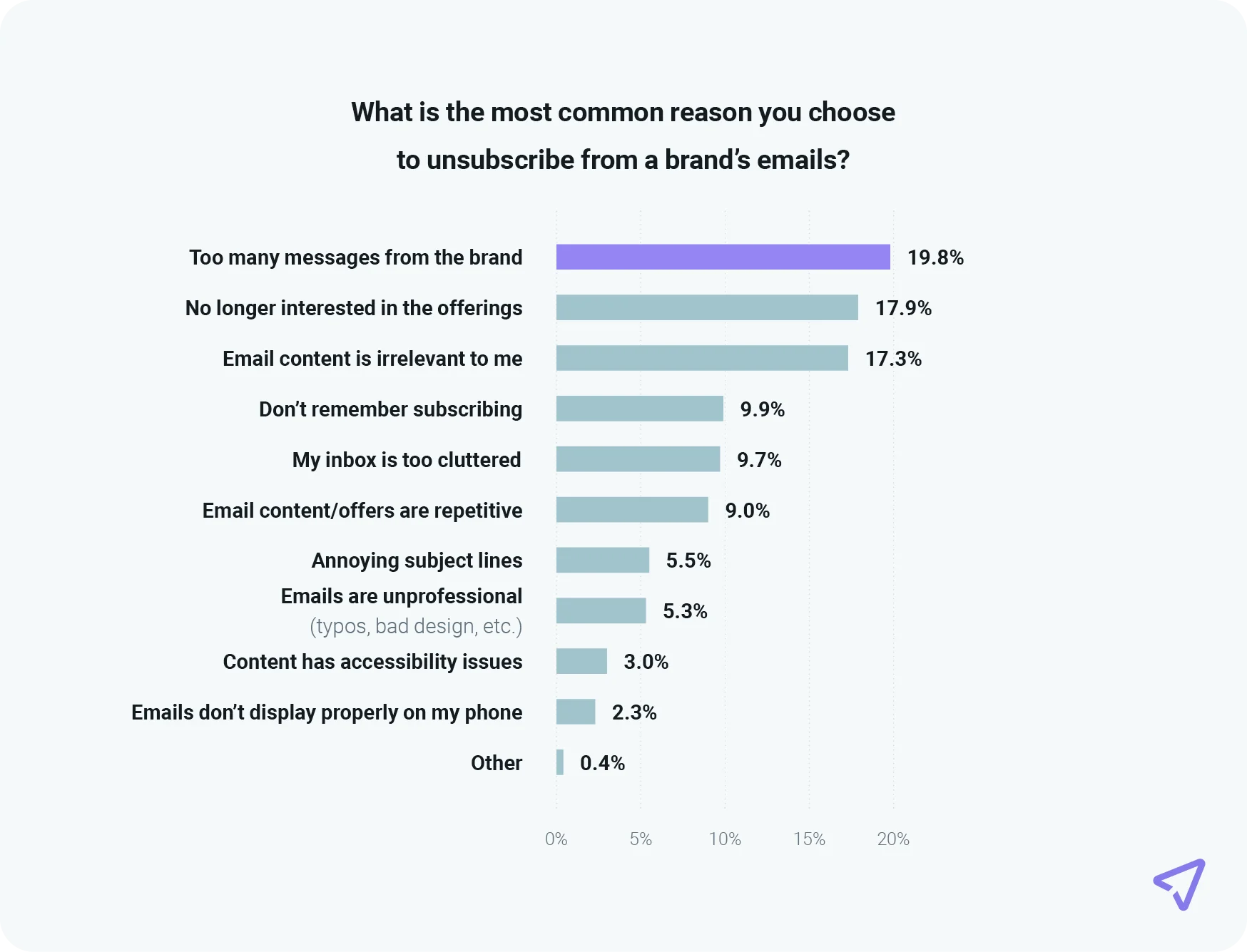
Clearly, you’re going to want to avoid both unsubscribes and potential customers disengaging with your content if looking to deploy an effective email marketing strategy. So, how can you achieve that? How do you strike a balance between too little and too much email communication?
While there’s no one size fits all approach to setting a perfect email marketing cadence, respondents to Sinch’s survey were able to give us a good ballpark figure from which to work from.
As we’ve pointed out, getting the frequency right is a big deal. 26% of respondents confirmed that too much promotional messaging is the main reason they’d stop working with a brand. On the flip side, 10% of consumers agreed that not sending enough communications would have the same effect. Add this up and you get over one third of customers ending their relationship with you over communication frequency.
So, we asked them how frequently do they want to be contacted about promotions?
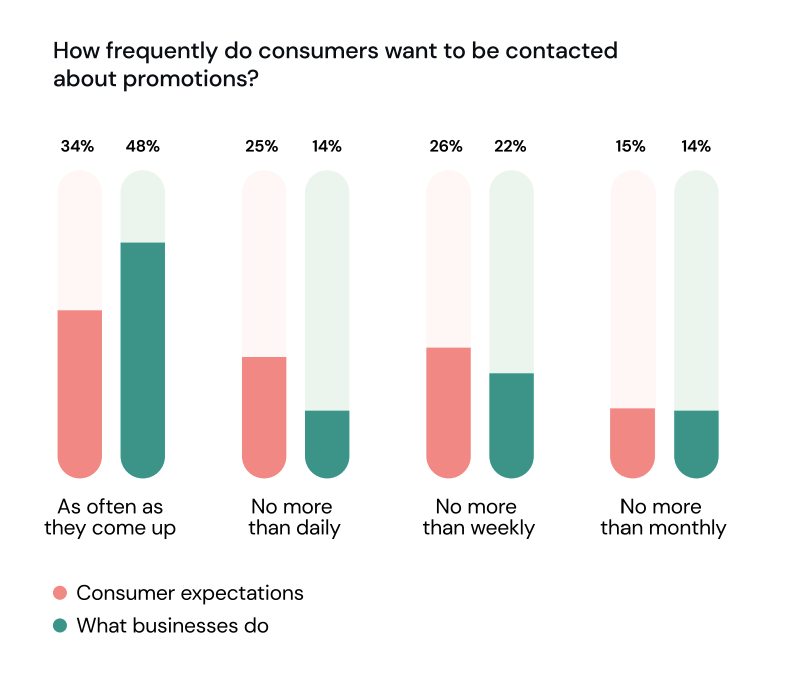
34% of consumers said they’d like to hear about promotions as soon as they’re announced, with 25% saying no more than once daily. The figure was similar for those customers wanting to receive a weekly update (26%) and slightly lower for those preferring monthly promotional updates (15%).
We also asked consumers when it comes to newsletters with updates or tips, what would be their preferred cadence? 17% responded they are open to receiving them daily, 40% preferred to receive them weekly and 24% said no more than monthly.
Again, these figures provide you context from which to plan out your own strategy. To find out the cadence that aligns best with your target audience, you’ll need to carry out your own internal testing.
So, how do you go about finding that sweet spot for your SMB? Here are few things to try below:
A/B testing different email sending frequencies helps you determine the optimal cadence for your audience by providing data-driven insights on engagement and overall campaign performance. Let’s look at a hypothetical scenario below.
Suppose you have an email list of 10,000 subscribers. You might decide to test four different sending frequencies to find out which one best resonates with your audience.
So, you split your list into four groups of 2,500 subscribers each and send them emails at their designated frequencies for a month: Group A (daily), Group B (weekly), Group C (bi-weekly) and Group D (monthly).
After the test period, you find that:
Based on these results, you might conclude that weekly emails offer the best balance of engagement and subscriber retention for your audience.
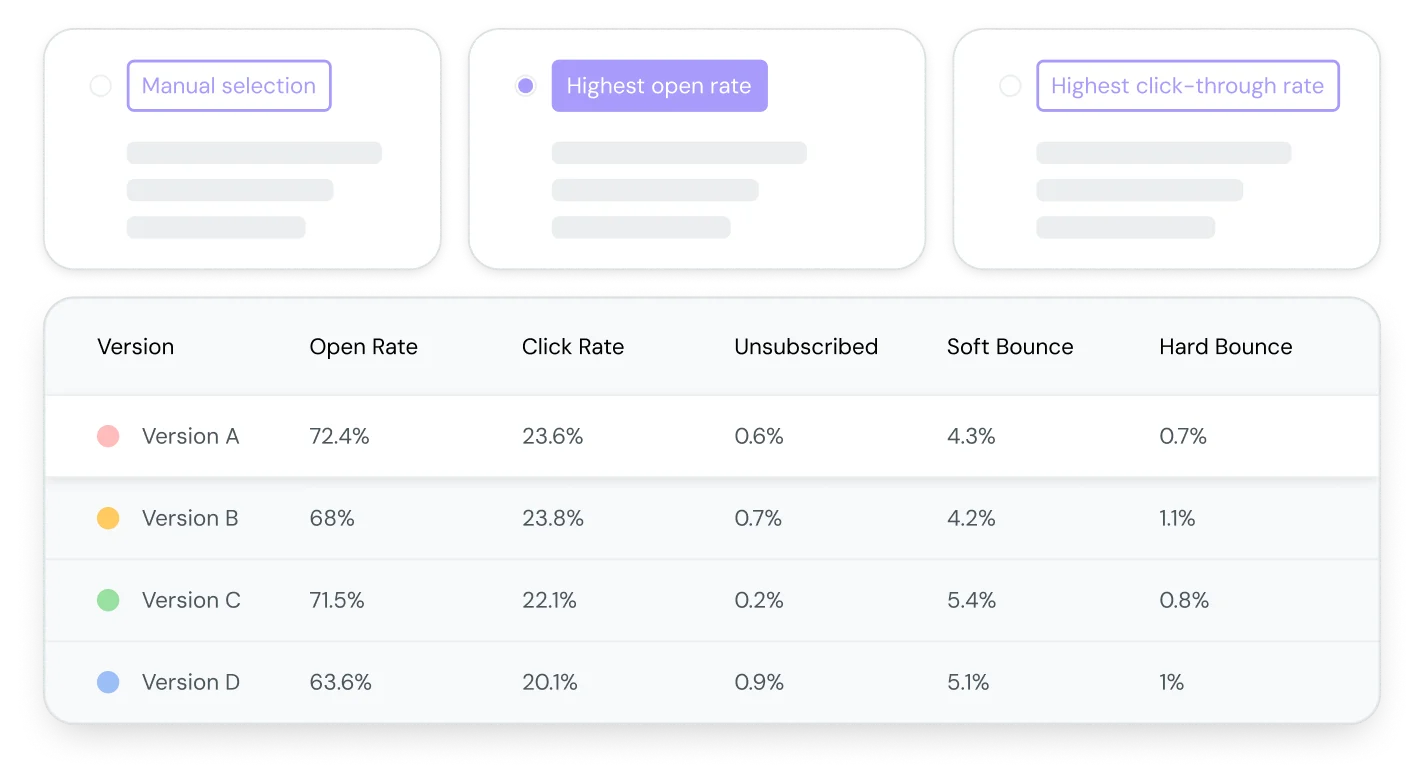
While ideally email senders should look beyond opens and clicks to measure the success of their email marketing campaigns, both metrics do provide a good indicator of subscriber fatigue.
For example, high email open rates indicate your subject lines are effective and your audience is interested in your content. If open rates drop when you increase the frequency, it might signal email fatigue, suggesting you should reduce the cadence.
Likewise, the same is true for click-through rates (CTR). If your CTR decreases as you ramp up sending frequency, it could mean your audience is overwhelmed or that the content is becoming less relevant. Either way, you should be monitoring both to ensure you’re meeting subscriber’s expectations.
Some other email marketing KPIs that offer great insight into campaign health you might consider adding to your list are:
While 26% of consumers said that too much communication would dissuade them from dealing with brands, 25% also noted that receiving irrelevant content would have the same effect. This point was also driven home in The path to email engagement 2024 where 17.3% of respondents indicated irrelevant content as the primary cause of them unsubscribing from email lists.
So, how can email segmentation help?
When you segment your list, you can send more relevant and personalized content to each group. This relevance can make subscribers more tolerant of the email frequency since the content they receive is closely aligned with their interests and needs. Personalized emails are more likely to be opened and engaged with, providing a clearer indication of optimal frequency.
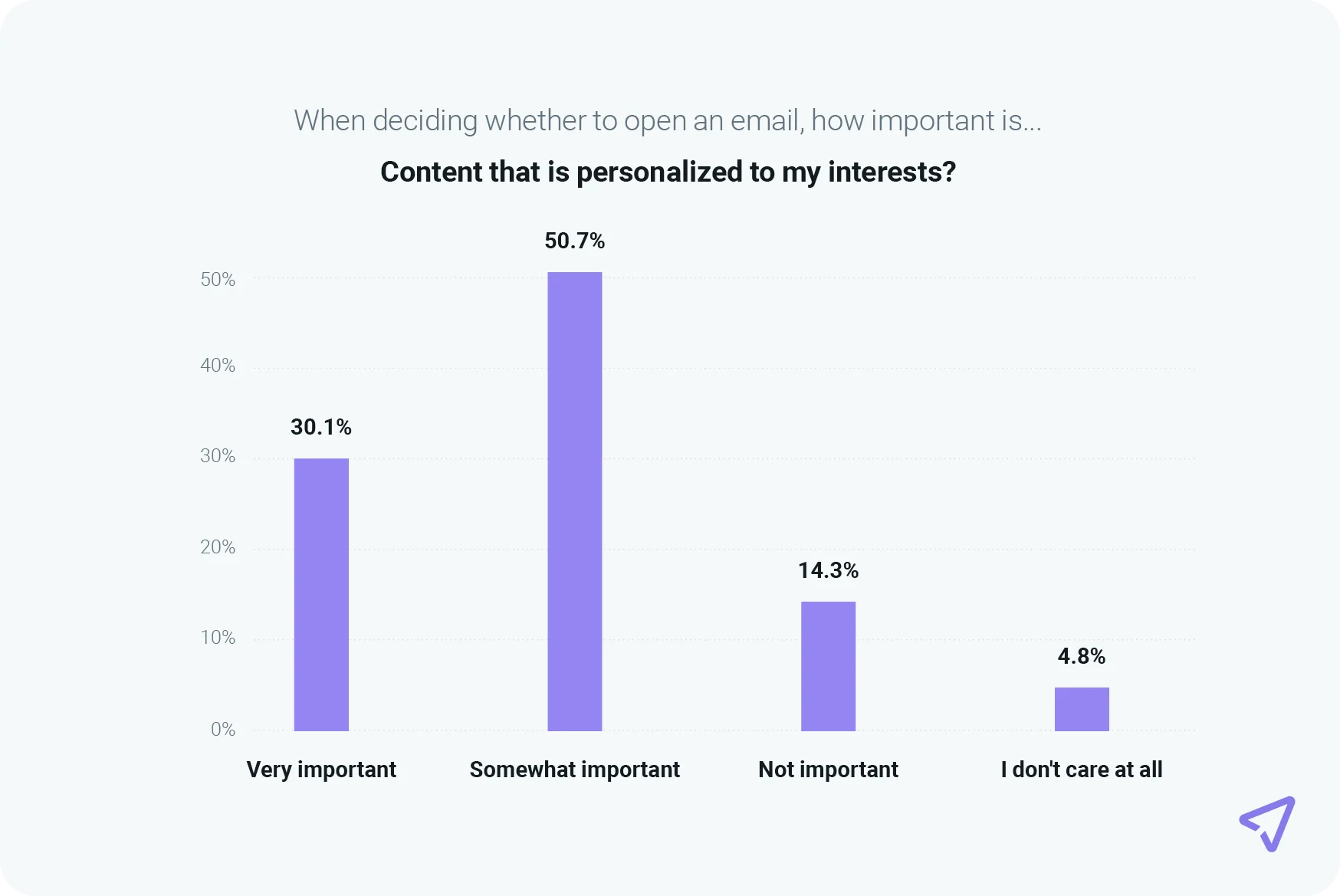
Also, by analyzing segments in isolation, you can identify patterns and preferences for email frequency among different groups. For example, highly engaged users might prefer more frequent updates, while less active users might respond better to fewer emails.
Getting email cadence right essentially boils down to you respecting your audience’s preferences – how often do they want to actually hear from you? This concept lies at the core of permission-based marketing.
As the name suggests, it’s about getting permission to send promotional campaigns before you send them. Because if someone has raised their hand and confirmed they want to hear from you, it’s more likely they’ll engage with your content, right?
The best method for confirming your subscriber’s interest is by sending what’s called a double opt-in message. This is typically an automated confirmation email immediately sent to recipients after signing up to receive your promotional messaging. It might include a verification link or code that they must click on or enter to confirm their subscription. This ensures the user is real and has willingly agreed to receive communication from the sender.
Another equally important aspect to permission-based marketing is knowing when to let go. Refusing to add a one-click unsubscribe button to protect your engagement metrics doesn’t change the fact that some people will want to part ways with you. It’s just a hard reality that all email senders must accept. Not doing so will also mean you fall foul to Google and Yahoo’s new sender requirements.
Want to stop them from leaving? Then keep your content timely and relevant.
While email marketing remains the preferred channel for receiving promotional communication, it’s not the only weapon in your arsenal. Taking an omnichannel marketing approach by balancing your messaging across different channels will be far more effective. It will also mean you avoid blowing up your subscribers’ inboxes.
People are becoming more open to receiving promotional messages via text, with some brands going a step further by combining email and SMS. Data from the report confirms that this customer-centric approach is an option email marketers should consider:


As you can see, SMS is the second most popular channel for receiving personalized recommendations and offers (18%) and promotions for existing customers (21%). However, when you combine it with MMS, WhatsApp, and other messaging channels they equal email in personalized offers (39%) and in fact edge it for existing customer promotions (40%).
As it is with any new marketing venture, building out an omnichannel strategy can be done one piece at a time, little by little, channel by channel. So don’t worry if you feel your team currently lacks the scope to deploy across several channels.
But if you’d like to know how (and where) to start building an omnichannel communication strategy, take Sinch’s free evaluation. Answer a few quick questions and we’ll provide data-driven recommendations that work for your industry and team.
